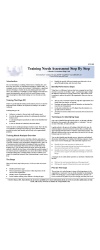Common Social Media Metrics Are Worthless
In my article on worthless metrics, I suggested that most metrics provided by social media platforms are, by and large, irrelevant to small business, because they look at things easily counted, rather than business outcomes.
Here’s an expansion on that theme. If you are only familiar with metrics provided to you by social media platforms, you may be surprised to learn how many different ways, the same “numbers” can be defined.
The Many Flavors Of A Visit/View
Most social media platforms provide a number indicating how many views or reads have been recorded for particular content. It’s probably almost human nature to think of these numbers as important. But few people think about the origin of those numbers, and how they might be calculated.
Here are some of the different ways views/reads can be calculated.
Hits:
Content can contain various parts, which are requested by a browser in sequence or synchronously (at the same time). So, the text can be requested, each picture as a separate entity, ads on a page, etc. A “hit” can be counted for each one of the component parts of a single page, greatly increasing the appearance of popularity.
Page Views:
Here’s where it gets really crazy, since there is no standard for what constitutes a page view.
For example, a page view can be recorded independent of time. So, a person viewing the page for one second is counted as a view, as would a person staying on the page for one minute or more.
A page view can be recorded for anytime someone views the article, AND any time an update is viewed related to that article that appears in a person’s “stream”. In effect, someone reading the actual article page, and the person simply “seeing” the update referencing the article can be counted equally.
Unique Vs. Non-Unique Views:
A unique view occurs when a person views an article the FIRST time, but if that person reloads the article within a set time (again a variable time), it’s not counted again, until the “waiting period” expires.
It’s quite possible that someone viewing an article, let’s say a hundred times in order to take part in a comment stream, will be counted one hundred times, even if it’s only one person coming back, not for the article, but for the interaction.
Bot/Automated Traffic:
It’s well known that a significant portion of traffic does not come from actual people, but from various machines. Sometimes those bots are potentially malicious, but but the most common ones are those from search engines like Google, or Bing (and a number of other small ones).
We have no idea how many of the visits recorded and displayed to you come from other machines going about their automated business.
Takeaways On Vanity Metrics/Visits
I call these social media metrics, vanity metrics, because they have virtually no value for small business, except to provide some illusion of quantity about a metric that is very distant from business outcomes. Good numbers make us feel better, poor ones make us feel bad, but in neither case to they provide information about business related results from social media.
- You cannot compare the metrics from one platform to another, because we don’t know if the platforms are using equivalent formulae to compute something even so simple as a “visit”.
- Even comparing two articles on views on the SAME platform, has some problems that can hide some fundamental issues. For example, one article may result in one thousand views, while another may clock in at two thousand views. On the surface of it, you’d think the higher number is better. However, what if, of the one thousand views, more people spent significantly more time reading the article? What if, for the two thousand view article, most people spent only seconds on it, and aren’t reading it?
- Views, by themselves, mean nothing, even under the best conditions. In fact the far more interesting metric, which social media platforms do NOT provide, is time spent on the page. While that is also error prone (e.g. someone keeping their browser open on a page and going to lunch), it’s still better.
- Unfortunately, if you post to social media, you can only use metrics THEY provide for you. That’s actually not the case if you run your own websites. Social media platforms do not permit you to track metrics in ways meaningful to your business, since often that would create potential security issues for them. On your own website, you can use providers like Google Analytics or Statcounter (both reputable statistical generators for metrics) to drill down and look at a lot of details about how visitors are interacting with your website and content.
Conclusion
If you want true analytics, you’ll need to place your content on your own website, and use some of the many free tools to gather the statistical information.
If that’s too complex for you, and/or you don’t have access to the knowledge and skills needed to create and run a good website, that’s fine.
However, put aside the notion that the vanity metrics — in particular views — are useful for any business purpose. Do not be mislead by them. In fact, ignore them. They mean nothing about the value of your content, and how people are interacting with it on social media.
Note: The use of “moron” instead of more on is a fun little thing started by Scott Simmerman some many years ago, so credit where credit is due.




